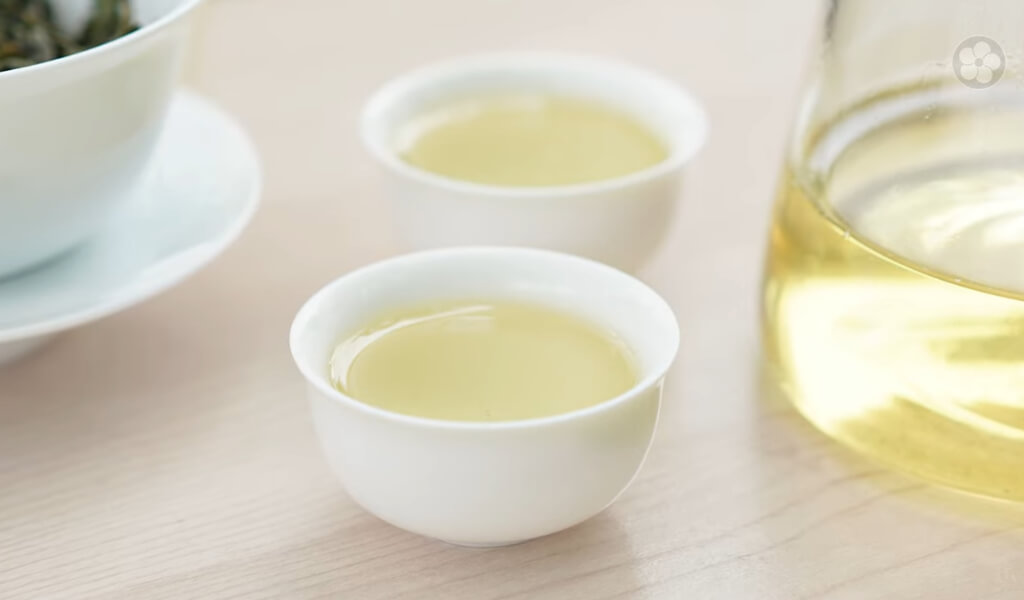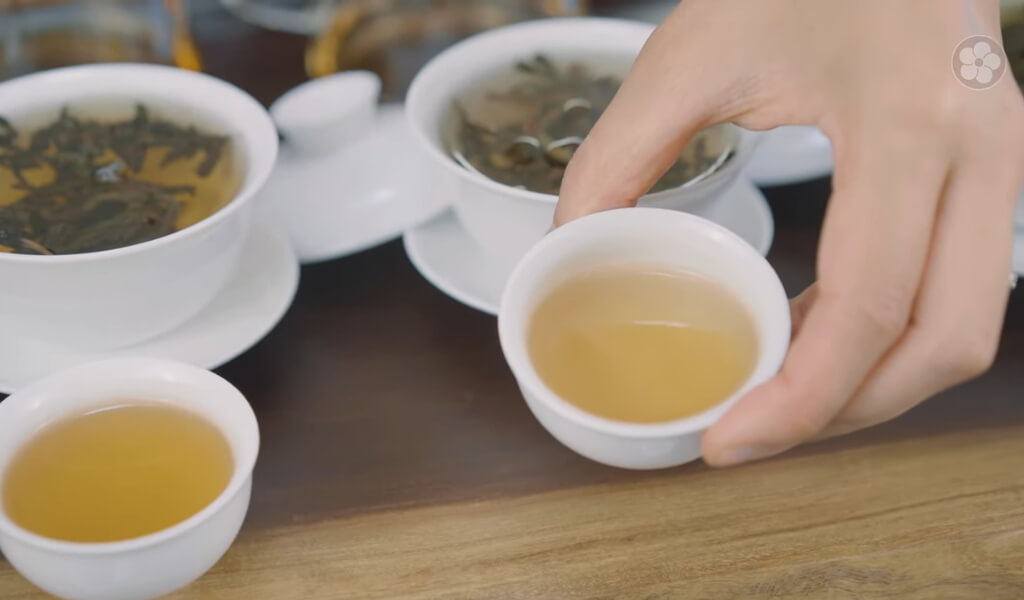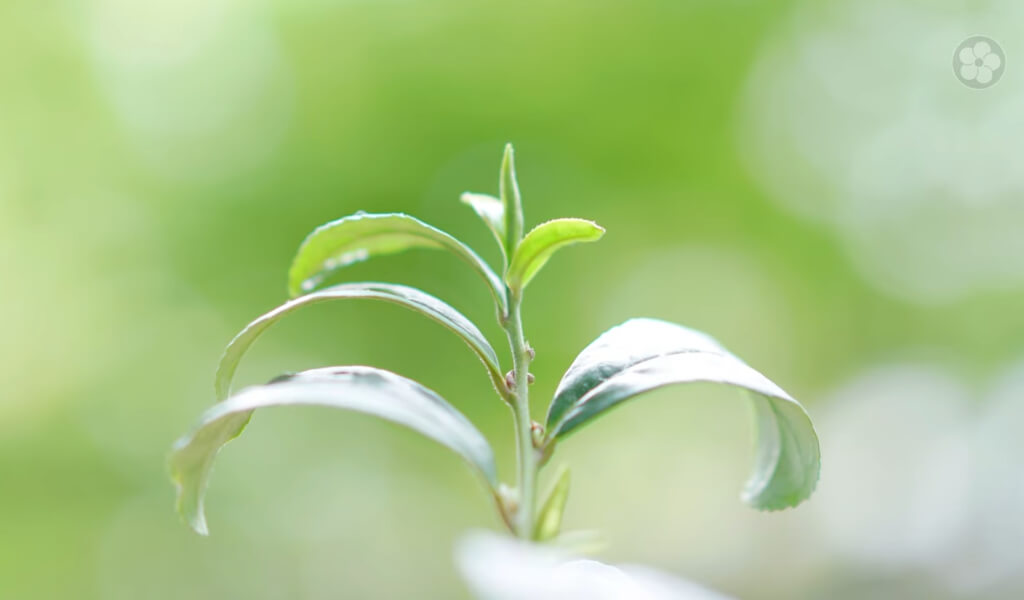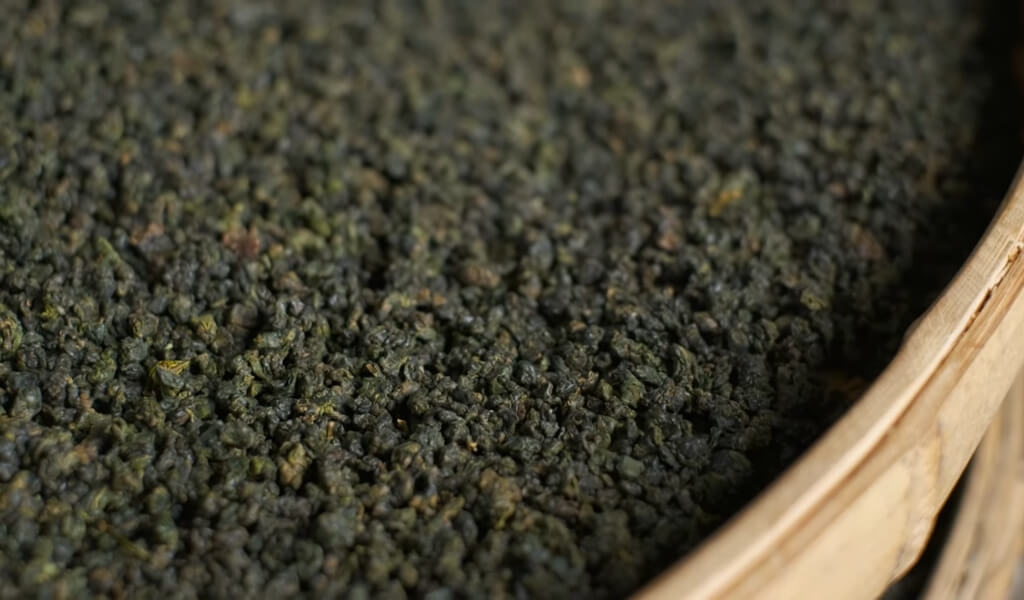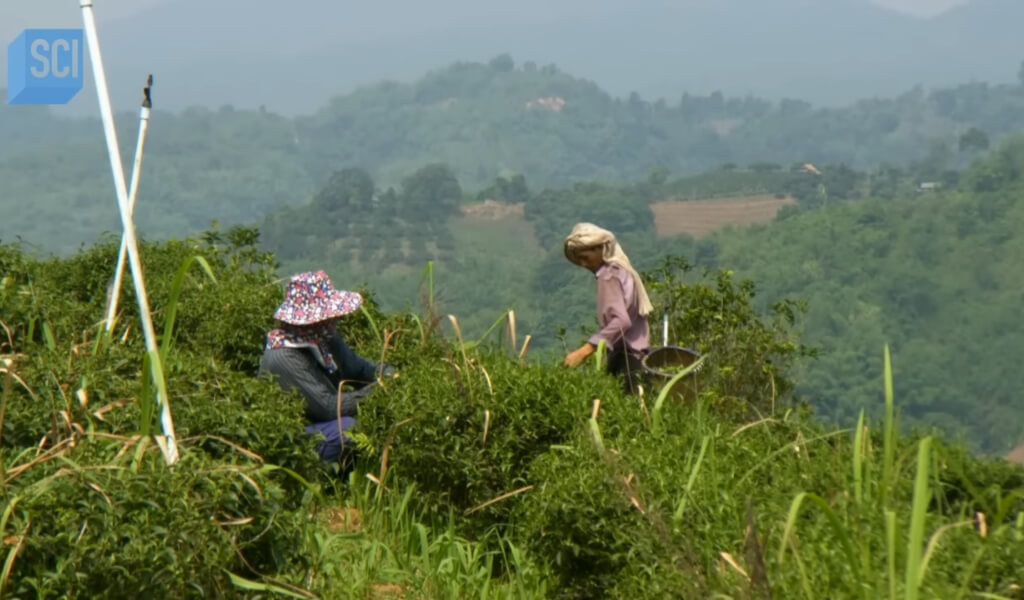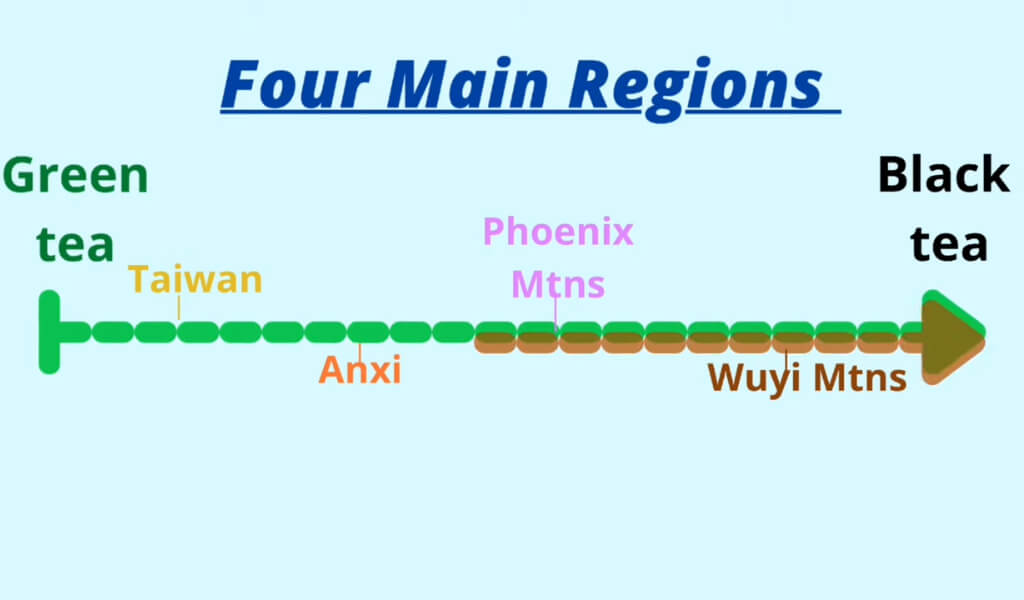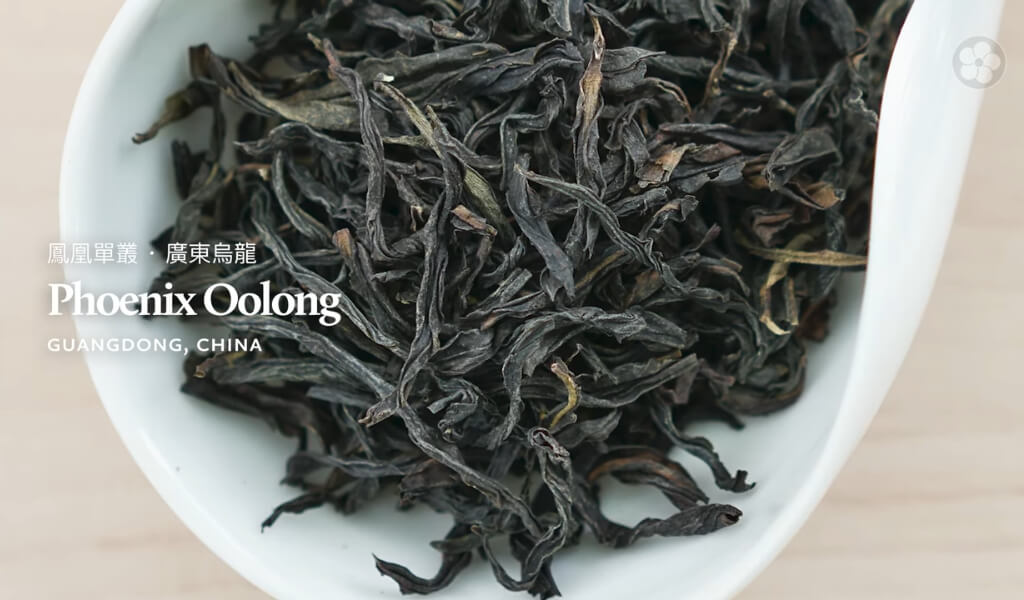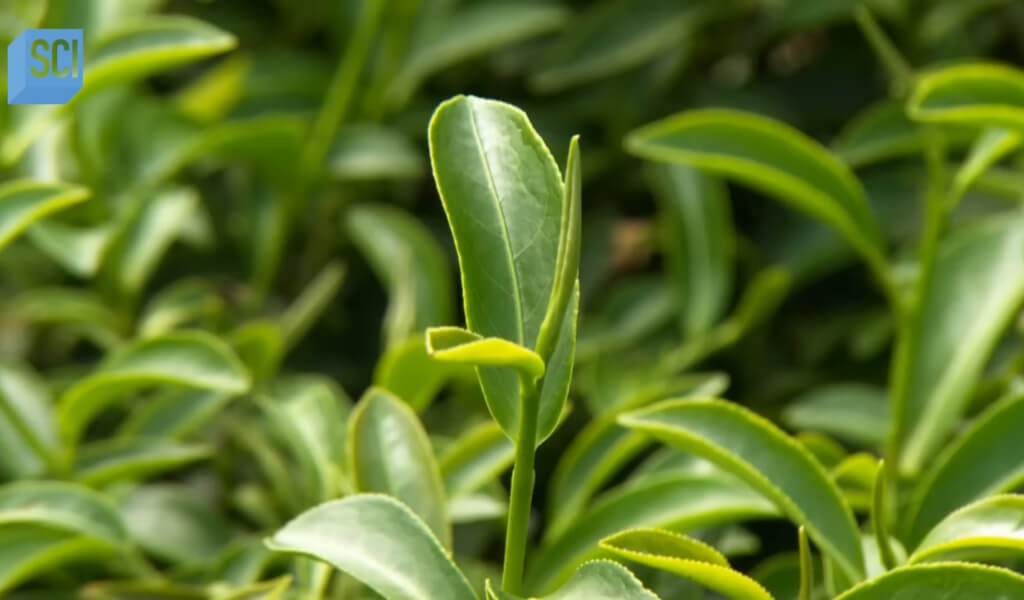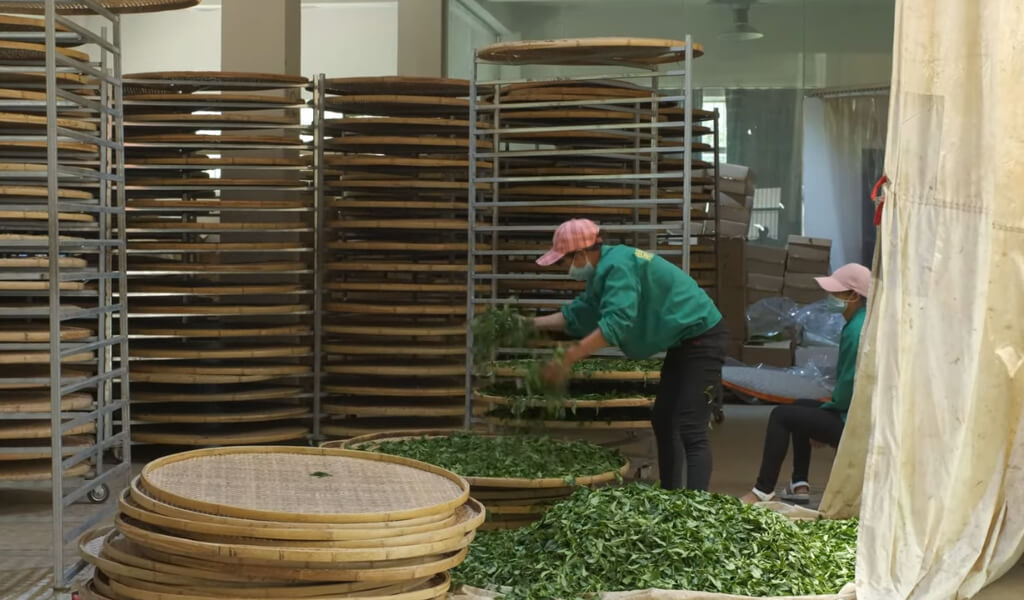“What is Oolong tea?” you might be asking. Well, I’m here to unravel the mysteries of this distinctive beverage steeped in rich history and diverse flavors.
I’ve spent the last ten years learning about tea, with a particular interest in Oolong, and I’ve accumulated a lot of information that I’m keen to share.
We’ll explore the history, tastes, and types of Oolong tea in this article.
Get ready to immerse yourself in the interesting world of this well-known tea; who knows, you could wind up discovering a new brew that becomes your new favorite!
Quotes of tea with You
Envision yourself amidst the luscious spread of tea greens with every sip of Oolong tea.
What is Oolong tea?
Oolong tea is made from the Camellia sinensis plant. Its dried leaves and leaf buds make several different teas, including Black and Green teas. Oolong tea is fermented for longer than green tea but less than Black tea. It contains caffeine which affects thinking and alertness.
The leaves of the Oolong tea tree undergo a unique process of withering, bruising, and partial oxidation, giving them a flavor profile as diverse as it is intriguing. Whether you’re new to the world of tea or a seasoned connoisseur, the distinct flavors of Chinese Oolong tea and its many other varieties are bound to captivate your taste buds.
Oxidation
Black tea undergoes full oxidation, resulting in its dark color and robust aroma. On the other hand, Green tea retains its original green hue and fresh flavor with minimal oxidation. Oolong tea, however, strikes a balance between the two, falling into the realm of partially oxidized tea.
Oolong tea can have anywhere from 8% to 80% oxidation, depending on the tea master’s method. Because of this variety, Oolong teas have a wide range of flavor profiles, with some favoring the freshness of Green tea and others the maltiness of Black tea.
Shape
Another aspect that sets Oolong apart is its shape. Traditionally, Oolong Green tea leaves are skillfully rolled, twisted, or curled into tight balls or slender strands, a craftsmanship that greatly impacts the final product’s appearance, color, and aroma.
The art of rolling leaves in different ways during processing allows the tea master to subtly influence the direction of the tea’s flavor journey.
What is the origin of Oolong tea?
Oolong tea, originally called “Black Dragon tea,” originated in China during the Ming Dynasty (1368-1644). The term “Oolong” is derived from the Chinese phrase “Wu Long,” which translates to Black Dragon.
History of Oolong Tea
Let me take you on a journey through the captivating history of Oolong tea.
It all began with its predecessor, Beiyuan tea, which dates back over 1000 years in Fujian, China.
Beiyuan tea is the earliest tribute tea in the region and gained immense fame after the Song Dynasty. Books from that era extensively documented the production and brewing techniques of Beiyuan tea. The tea originated in the Fenghuang Mountain area of Jianou, Fujian, where it was cultivated during the late Tang Dynasty.
According to records in “Fujian Tongzhi,” Zhang Tinghui employed workers in the Phoenix Mountains to cultivate tea during the late Tang Dynasty.
Initially, it was processed into a paste tea. In the second year of Song Taizong’s Taiping Xingguo (977), Longfeng tea emerged, and it underwent further transformations after Song Zhenzong’s reign (998).
The result was the world-renowned dragon and phoenix cake, known as Xiaotuan tea. Cai Xiang, a transit official in Fujian then, supervised the production of tribute tea and specifically praised Beiyuan tea in his work “Tea Records” written in 1051.
He described the tea as having a predominantly sweet and smooth taste, with the Phoenix Mountain in Beiyuan being particularly notable for its skilled tea artisans.
Following Beiyuan tea, Wuyishan tea gained tribute status during the Yuan, Ming, and Qing dynasties, driving its development.
Oolong tea, as we know it today, was created around 1725 during the Yongzheng period of the Qing Dynasty. The people of Anxi, Fujian, were the pioneers who developed the Oolong tea plant by imitating the production methods of Wuyi Mountain tea and incorporating their improvements.
The method of making Oolong tea was first invented in the third year of the Yongzheng period and gradually spread to northern Fujian and Taiwan.
Historical records indicate that Oolong tea was sold in a tea shop in Fuzhou in 1862. Since 1866, Taiwan has been exporting Oolong tea, and Anxi County in Fujian has become the main production hub, earning the title of “Hometown of Chinese Oolong Tea (Famous Tea)” in 1995.
Production area distribution
Oolong tea is produced in various regions. Guangdong’s main production area is Fenghuang Township, often called “Phoenix Narcissus,” due to the combination of the narcissus variety and the location.
Northern Fujian encompasses Chong’an (excluding Wuyi Mountain), Jian’ou, Jianyang, Shuiji, and other areas. Southern Fujian, particularly Anxi County, is renowned for its Oolong tea production.
In Taiwan, Oolong tea is produced in Taipei, Taoyuan, Hsinchu, Miaoli, Yilan, and other counties and cities. It holds the distinction of being Taiwan’s earliest tea production area.
Read More:
Types of Oolong Tea
When it comes to Oolong teas, they are as varied and unique as the regions they hail from. Each country, even each region within a country, produces Oolong with its distinct flavor profile, aroma, and character. Let’s embark on a delightful journey through the world of Oolong teas, starting with those from China.
Chinese Oolong Teas
China is often referred to as the birthplace of tea and offers a rich diversity of Oolong teas, each with its unique flavor and aroma. Let’s explore some of the finest varieties from the Fujian province, a region renowned for its exceptional Oolong teas.
Fujian Oolong Teas
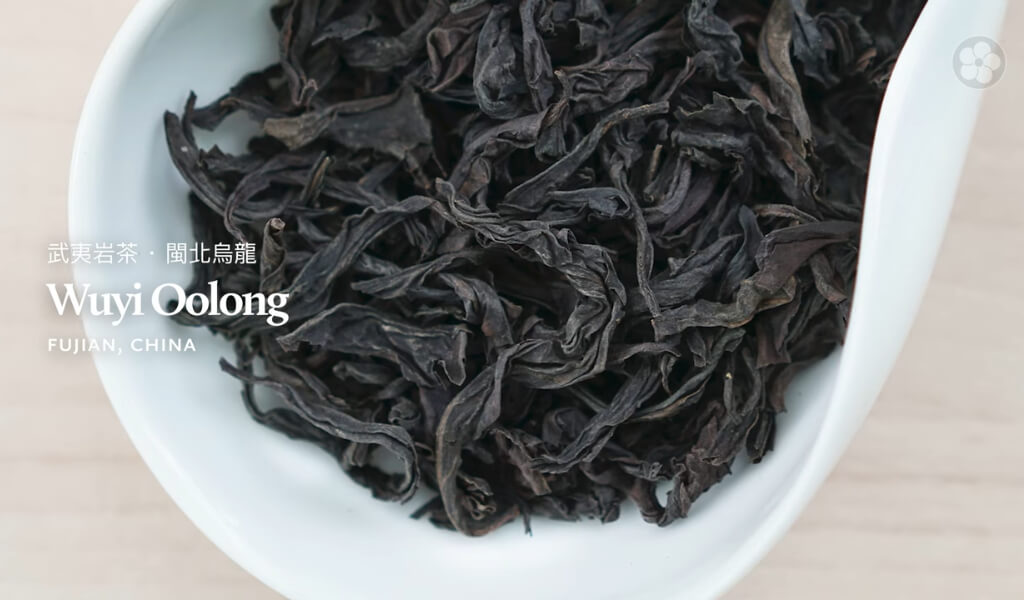
Wuyi Mountains (Bohea): Nestled in the heart of the Fujian Province, they are famous for their ‘rock teas’. These Oolongs, known as “Yan Cha”, have a deep, roasted flavor with a distinctive mineral finish, thanks to the rich, rocky soil they grow. According to “The Book of Tea”, these teas are prized for their “orchid-like aroma” and the beautiful balance they strike between strength and subtlety.
- Da Hong Pao: Da Hong Pao, or ‘Big Red Robe’, is the most renowned tea from the Wuyi Mountains. Over the years, I’ve tasted many variations of Da Hong Pao, and its depth and complexity never amaze me. It’s known for its rich, complex flavor, including dark chocolate notes, ripe fruit, and even a hint of sweet spice.
- Shui Jin Gui: Translated as ‘Golden Water Turtle’, Shui Jin Gui is another gem from the Wuyi Mountains. It’s known for its strong, sweet aroma, with undertones of orchid and peach.
- Tieluohan: Tieluohan, or ‘Iron Arhat’, is a Wuyi rock tea with a lighter, more floral flavor profile than its counterparts. Its fresh orchid aroma and subtly sweet aftertaste often characterize it.
- Bai Jiguan: Bai Jiguan, or ‘White Cockscomb’, is a lighter, more delicate Wuyi Oolong. It’s known for its sweet, floral notes and a subtle hint of creaminess.
- Rougui: Rougui is a unique Wuyi rock tea famous for its warm, spicy notes of cinnamon. This characteristic spiciness and its full-bodied, roasted flavor make Rougui a distinctive Oolong tea.
- Shui Xian: Last but not least, Shui Xian, or ‘Water Sprite’, is a Wuyi tea known for its deep, rich flavor and intoxicating floral aroma. Each sip of Shui Xian is a sensory journey, with notes of honey, orchid, and a hint of mineral complexity.
Each Oolong tea from the Fujian Province has an own tale to tell, reflecting the region’s rich history and varied terroir.
Anxi Oolong Teas
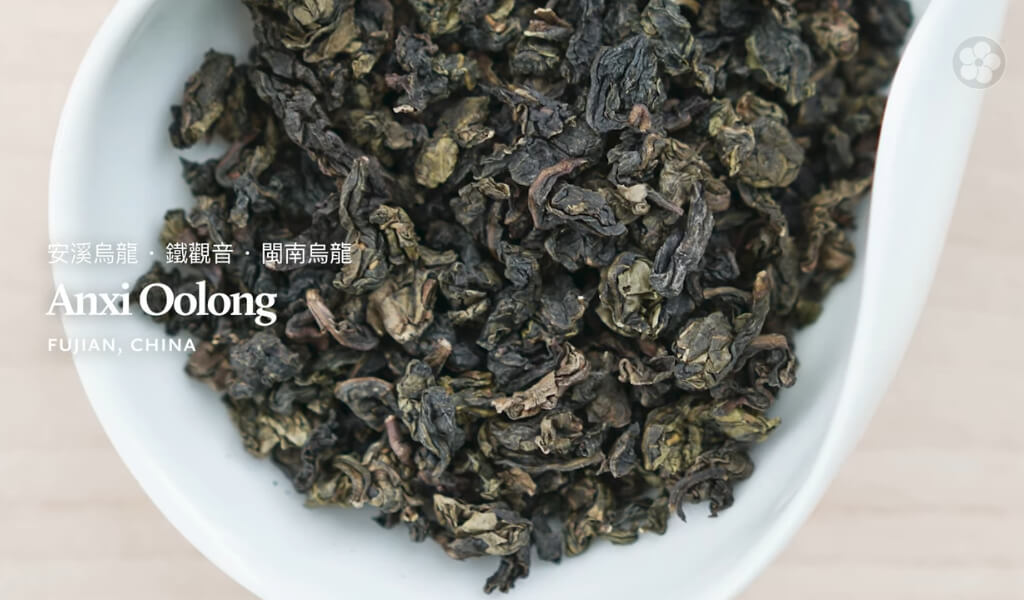
Anxi, another region in the Fujian province, is known for two major types of Oolong tea: Tieguanyin and Huangjin Gui.
- Tieguanyin: Also known as ‘Iron Goddess of Mercy’, Tieguanyin is one of China’s most famous Oolong teas. It boasts a floral aroma and a delightful balance of sweetness and astringency, a harmonious blend I’ve come to admire over the years.
- Huangjin Gui: Huangjin Gui, or ‘Golden Osmanthus’, is named for its unique osmanthus-like aroma.
Guangdong Oolong Teas
In Guangdong province, the star of the Oolong show is Dancong.
- Dancong (Phoenix Oolong): Dancong teas are celebrated for their ability to naturally imitate the flavors and fragrances of various flowers and fruits. Each sip of a Phoenix Oolong is a delightful surprise, offering an aromatic symphony that’s truly one-of-a-kind.
Taiwanese Oolong Teas
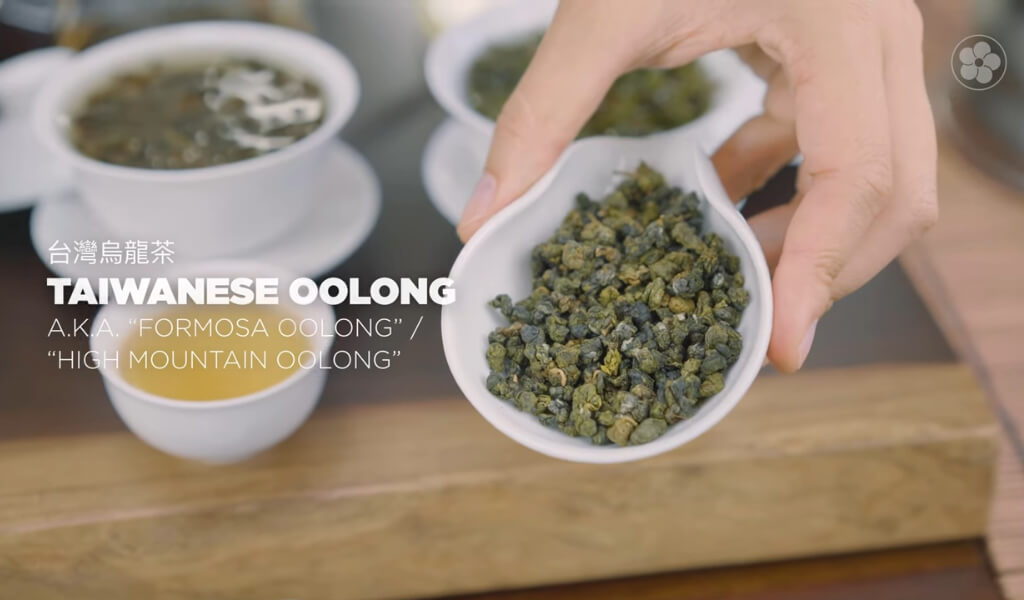
Across the Taiwan Strait, we find a treasure trove of distinctive Oolong teas.
- Dong Ding: Named after the mountain where it is grown, Dong Ding Oolong is known for its rich, full-bodied flavor and sweet, lingering finish. Having had many a cup of Dong Ding, I can vouch for its robustness and depth.
- Dongfang Meiren (Oriental Beauty): This tea, also known as ‘Braggart’s Tea’, is famous for its unique fruity and honey-like flavor. It’s a highly oxidized Oolong with a natural sweetness that’s hard to resist.
- Alishan Oolong: Grown in the high mountain ranges of Alishan, this tea offers a creamy texture and a delicate floral aroma, delivering a truly ethereal experience.
- Lishan Oolong: Similar to Alishan, Lishan Oolong is grown at high altitudes and has a floral, slightly fruity flavor with a refreshing finish. It’s the kind of tea that leaves a lasting impression.
- Baozhong: With its light oxidation, Baozhong has a gentle, floral character. It’s a delightful tea that I’ve found soothing and refreshing.
- Ruan Zhi: This tea, also known as ‘Soft Stem’, is a lightly oxidized Oolong with a delicate, floral flavor. It’s a testament to the subtlety and grace that Oolong teas can offer.
- Jin Xuan (Milk Oolong): Renowned for its creamy, buttery flavor, Jin Xuan, or ‘Milk Oolong’, is a delightful treat for the senses. Its distinctive milk-like aroma and taste have made it a favorite of mine over the years.
- Black Oolong: Despite its name, it is a deeply fermented Oolong with a rich, robust flavor. It’s a tea that showcases the wide range of flavors that Oolong can provide.
- High-Mountain or Gaoshan: Grown at altitudes over 1,000 meters, Gaoshan teas have a distinct, complex flavor profile. These teas are cherished for their vibrant floral notes and refreshing, sweet aftertaste.
Read More:
Other Varieties
We also have Oolong teas from other regions, such as India, outside China and Taiwan.
- Darjeeling Oolong: Known for its muscatel flavors and a light, floral aroma, Darjeeling Oolong is a delightful deviation from the region’s renowned black teas. It’s a tea that showcases the variety and richness of flavors that Oolong teas can offer worldwide.
Some world-famous Oolong tea brands such as Jin Xuan, Da Hong Pao, Dong Ding tea, The Republic of Tea, Dongfang meiren, Vahdam Teas, Twinings, Pure Leaf, Bigelow…
Producing Progress
The fascinating production process of oolong tea, with its distinct picking standards and the careful selection of leaves for optimal quality.
Season
The tea-growing regions in southern Fujian benefit from a favorable climate, abundant rainfall, and a lengthy growth cycle for tea trees.
Throughout the year, there are four to five tea harvesting seasons: spring, summer, summer, autumn, and winter tea. The picking periods vary based on tea varieties, climate, altitude, and fertilization. Generally, spring tea is harvested around the grain rain season, summer tea around the summer solstice, summer tea at the beginning of autumn, autumn tea around the autumnal equinox, and winter tea after the frost.
The picking interval between each tea season spans 40 to 50 days. It’s essential to “start picking reasonably early, pick at the right stage, and avoid rough and old leaves” for precise control of the picking process.
Standard
The picking standard for Oolong tea focuses on selecting more mature leaves than those used for green or red tea. When the new shoots of the tea tree grow to 3-5 leaves and the top leaves are 60% to 70% open, the next 2-4 leaves are carefully picked in a method known as “open face picking.
This method involves selecting leaves based on their relative sizes. “Small open face” refers to picking the first leaf on the top of the new shoot, which is half the size of the second leaf.
“Middle open face” means the first leaf on the top is about two-thirds the size of the second leaf. “Open D” refers to the top leaf being equal in size to the second leaf.
During spring and autumn, “open middle face” picking is preferred, while summer tea requires a delicate approach, known as “small open face,” where one bud and three or four leaves are selected.
Tea farmers have developed the “tiger’s mouth-to-core picking method.” This involves opening the thumb and forefinger, inserting them from the center of the bud’s top, giving a gentle twist, and plucking the tea leaves.
The general leaf-picking standard is as follows: picking two leaves for longer stems with three leaves, picking three leaves for longer stems with four leaves, and avoiding picking fish leaves, single leaves, or stalks.
During picking, it’s important to separate different tea varieties, greens harvested in the morning, afternoon, and evening, thick leaves from young leaves, dry tea greens from wet ones, and different grounds to ensure the highest quality of raw tea.
Choose Sunny Afternoon Green Leaves
During the spring Oolong tea harvesting season, continuous rainy weather can significantly impact the quality of high-grade Oolong tea.
Excessive moisture in the fresh leaves hinders sun-drying and normal transformation of essential substances, leading to the inability to produce high-quality Oolong tea. The time of day when the fresh leaves are picked also influences the tea’s quality.
| Time | Quality |
| Zaoqing |
Fresh leaves picked before 10:00 a.m. often carry dew and result in lower tea quality.
|
| Morning Green |
Fresh leaves picked from 10:00 a.m. to 12:00 noon have had some exposure to the sun, allowing the dew to evaporate. This leads to better tea quality compared to morning or evening picking.
|
| Afternoon Green |
Fresh leaves picked between 12:00 p.m. and 4:00 p.m. are fresh, refreshing, and have ample time for drying. The tea quality is excellent during this period.
|
| Late Green |
Fresh leaves picked after 4-5 p.m. often miss the ideal time for sun-drying due to their late arrival from the mountains. As a result, they cannot undergo proper sun-drying and withering, impacting the quality of tea production. However, the quality is still better than that of early green leaves.
|
Making
The process of making Oolong tea involves several production steps:
Airing => Shaking => Finishing => Kneading => Baking.
Oolong tea can be categorized into three subcategories based on the different methods of making it green:
- Jumping to make green.
- Shaking to make green.
- Hands to make green.
Following these meticulous production techniques, Oolong tea achieves its unique flavors and characteristics, ensuring a delightful and satisfying tea-drinking experience.
What is Oolong tea made of
While Oolong tea has various components, I’ll focus on two key ingredients representing its unique qualities.
Caffeine
Caffeine is present in oolong tea, like in green and black tea. As caffeine is a stimulant, drinking tea can help refresh your mood. However, it’s important to be mindful of the timing, as consuming tea before bedtime may make it difficult to fall asleep.
It’s also advised that children, pregnant women, and breastfeeding women exercise caution when consuming caffeinated beverages. Here are the approximate caffeine contents per 100ml of different teas, according to the Standard Tables of Food Composition in Japan 2015:
- Oolong tea (15g of tea leaves steeped in 650ml of hot water at 90°C for 30 seconds): 20mg
- Black tea (infuse 5g of tea leaves with 360ml of hot water for 1.5 to 4 minutes): 30mg
- Sencha (10g of tea leaves steeped in 430ml of hot water at 90°C for 1 minute): 20mg
- Gyokuro (10g of tea leaves steeped in 60ml of hot water at 60°C for 2.5 minutes): 160mg
Oolong Tea Polyphenols
Oolong tea undergoes partial fermentation, resulting in lower Catechin levels than Green tea. However, it produces a distinctive compound known as Oolong tea Polyphenols. Ongoing research explores these polyphenols’ potential benefits and functions, creating high expectations for their unique properties.
To provide a clear overview of the Caffeine content in different teas, here’s a table summarizing the data:
| Tea Type | Caffeine Content per 100ml |
| Oolong Tea | 20mg |
| Black Tea | 30mg |
| Sencha | 20mg |
| Gyokuro | 160mg |
Oolong tea polyphenols are an intriguing area of study, and further research aims to uncover their potential functions and benefits.
How to choose Oolong tea leaves
When distinguishing good tea leaves, I’ve learned a few helpful tips from my buying experiences at local stores.
Tea Leaf
- Look for uniformity in shape and color throughout the tea leaves.
- High-quality tea leaves often exhibit a light blue hue and a transparent appearance.
- Pay attention to balancing the fermented (red) and unfermented parts.
- Good tea leaves feel moist, shiny, and soft, indicating freshness. In contrast, lower-quality leaves may feel rough and withered.
- Thick tea leaves tend to possess richer flavor profiles. However, note that summer tea and low-altitude tea generally have thinner leaves.
Environmental Factors
- Tea plants that grow in harsh environments typically yield better-tasting leaves. Excessive fertilizer and management practices can adversely affect leaf quality.
- Look for tea grown on slopes with good drainage.
- Proximity to rivers and lakes and significant temperature differences between day and night (which may create fog) are favorable environmental conditions.
- Tea leaves grown at higher altitudes often possess desirable characteristics.
- Younger tea trees have stronger aromas and flavors, although preferences may vary depending on the tea type.
Seasonal Variations
- Spring tea is generally considered the most fragrant and of the highest quality for Oolong tea.
- Autumn tea is known for its distinct taste and is also regarded as favorable.
- Winter tea, although gaining attention recently, offers a delightful balance of sweetness, umami, and a moderate aroma.
- Summer tea may have a higher level of bitterness and comparatively less umami and aroma. It’s worth noting that the taste quality tends to decline the farther we move from winter.
Let me share with you my home preservation experience when it comes to storing Oolong tea.
Storage method
Store your Oolong tea in a cool, well-ventilated area away from direct sunlight.
Avoid humid environments where mold can thrive. Moisture can compromise the quality of the tea.
Be cautious of the storage environment and container, as the tea’s aroma can transfer.
Summer Storage
- Summer poses challenges due to the increased risk of mold and insects. To combat this, find a cool spot away froleaves’ m direct sunlight with good airflow.
- It’s not recommended to store Oolong tea in the refrigerator due to high humidity and the risk of absorbing odors. Use a bag with high gas barrier properties to preserve the tea’s flavor if necessary.
Does it become delicious with long-term storage?
- Fermented and roasted Oolong teas, such as rock tea and charcoal-roasted iron Kannon, can improve the taste with long-term storage if suitable conditions are suitable. Like aging wine, the flavors become more harmonious and well-balanced over time.
- Freshly brewed tea showcases distinct taste components, but a well-rounded flavor develops after several months to a year of storage. The soluble components within the tea leaves also increase, resulting in a rich flavor.
- Note that the suitability for long-term storage depends on the quality and type of tea leaves. Some tea leaves may require re-roasting annually. Tea leaves are ideal for storage and can be preserved for up to 30 years. However, greener and less fermented or roasted teas are generally unsuitable for long-term storage.
It’s sad if your tea goes bad before you want to enjoy it, isn’t it? So please read these instructions carefully. It does work.
Myths about Oolong tea
Oolong tea is a miracle weight-loss solution.
Reality: While it’s true that Oolong tea can contribute to weight loss, it’s important to note that this effect is not exclusive to Oolong tea.
All types of tea can aid in weight management. However, it’s crucial to understand that tea alone is not a magic solution for shedding pounds.
Maintaining a balanced diet and regular physical activity is necessary for sustainable weight loss. So, don’t rely solely on tea to keep off those extra pounds!
Only one bud and two leaves should be picked for Oolong tea.
Reality: To produce high-quality Oolong tea, picking not just one bud and two leaves but the third and fourth leaves and the whole stem (proximal) is necessary.
This careful selection of one shrimp and three to four leaves ensures Oolong tea’s desired quality and flavor.
In conclusion
Oolong tea is a distinctive and tasty brew that, in terms of oxidation, lies in between black and green tea. It is favored by tea lovers worldwide and may provide a number of health advantages.
Whether you’re seeking for a revitalizing cup to start your day or a relaxing mix to unwind, Oolong tea is worth investigating. To retain their flavor and aroma, always remember to select high-quality tea leaves and adhere to suitable storage procedures.
If you’ve discovered a favorite Oolong tea recipe or have any additional questions, we encourage you to share them with others.
Thank you for reading! spiriteadrinks.com
FAQs
Is Oolong tea black or green tea?
Oolong tea doesn’t belong to black or green tea categories but has its own distinct category. However, oolong characteristics can lean more towards black tea or green tea, depending on how the master processes it.
What is the difference between Oolong tea and regular tea?
Oolong tea is a category of tea that includes various types, while “regular tea” is a broad term that can refer to different tea varieties. Oolong tea undergoes partial fermentation, resulting in a unique flavor and aroma compared to other teas.
Is oolong tea black tea stronger than black tea?
The strength of tea can vary depending on personal preference and brewing methods. While oolong tea has a distinct flavor profile, it is not necessarily stronger than black tea in terms of caffeine content.
How is oolong tea different from green tea?
While both oolong tea and green tea come from the same plant, Camellia sinensis, they undergo different processing methods. Oolong tea is partially fermented, whereas green tea is unfermented. This fermentation process gives oolong tea a more complex flavor than green tea’s fresh and grassy taste.
How does the flavor of oolong tea vary?
The flavor of oolong tea can vary depending on factors such as the level of oxidation, the specific tea cultivar, and the terroir of the tea-growing region. Oolong teas can range from light and floral to rich and toasty, offering diverse flavors to explore.
Is oolong tea the same as Thai tea?
No, oolong tea and Thai tea are not the same. Thai tea is typically a strong black tea often spiced with ingredients like star anise and crushed tamarind seed and is commonly served sweetened with sugar and condensed milk.
I’m Shanna, creator of Spiritea Drinks. I’m all about teaching people to grow their own food, tea, cook what they harvest, and eat with the seasons.

